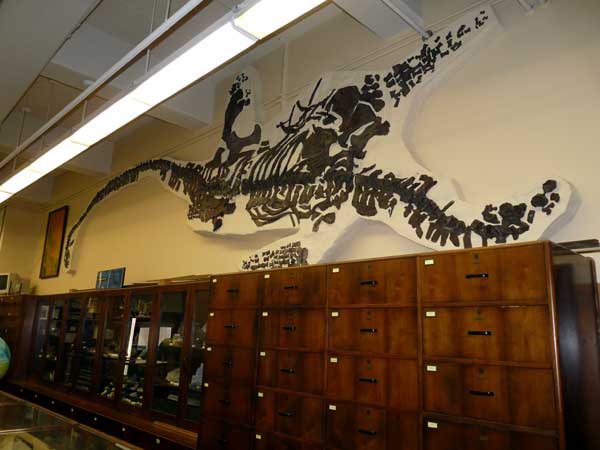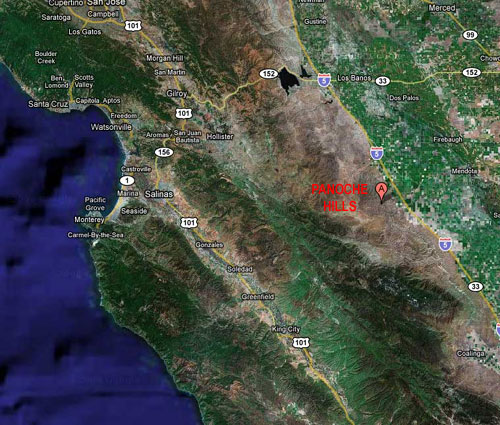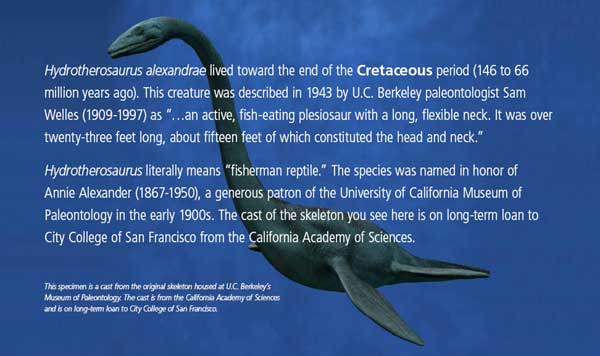Plesiosaur
The Plesiosaur is currently assembled and installed in room S45. The lower paddle has had to be moved to the left to accomodate our space. The wall and fossil backing have been painted the same cream color. A map on the wall shows where the fossil was found (in the hills of California, in San Benito County, east of Monterey). A panel shows information about the Plesiosaur (see below for details). Read more on Plesiosaur evolution by looking at our other (Plesiosaur and Ichthyosaur -- Different Strokes -- display fossil).


The images below are photos of the exhibit panels. Click on them to see a high-definition PDF.
PANEL TEXT
Plesiosaurs were large swimming reptiles that lived during the time of the dinosaurs. The specimen displayed here is the species Hydrotherosaurus alexandrae. It was discovered in 1937 in the Panoche Hills in the southern Coast Ranges of California. It is one of the most complete plesiosaur skeletons ever excavated.
Hydrotherosaurus alexandrae lived toward the end of the Cretaceous period (145.5 to 65.5 million years ago). This creature was described in 1943 by U.C. Berkeley paleontologist Sam Welles (1909-1997) as “…an active, fish-eating plesiosaur with a long, flexible neck. It was over twenty-three feet long, about fifteen feet of which constituted the head and neck.”*
*Description and art from R.P. Hilton, Dinosaurs and other Mesozoic Reptiles of California. Berkeley: University of California Press. 2003.
Hydrotherosaurus literally means “fisherman reptile.” The species was named in honor of Annie Alexander (1867-1950), a generous patron of the University of California Museum of Paleontology in the early 1900s. The cast of the skeleton you see here is on long-term loan to City College of San Francisco from the California Academy of Sciences.


